Tillandsia praschekii
Click thumbnails for full size, scaled to a new window.
Tillandsia praschekii
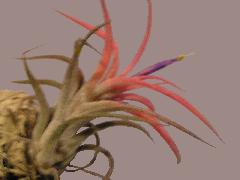
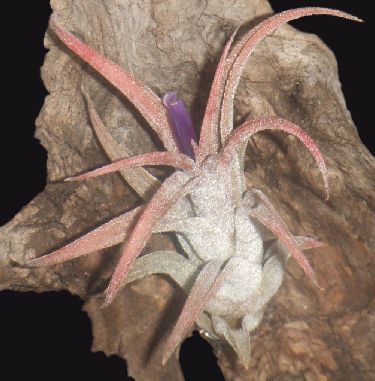
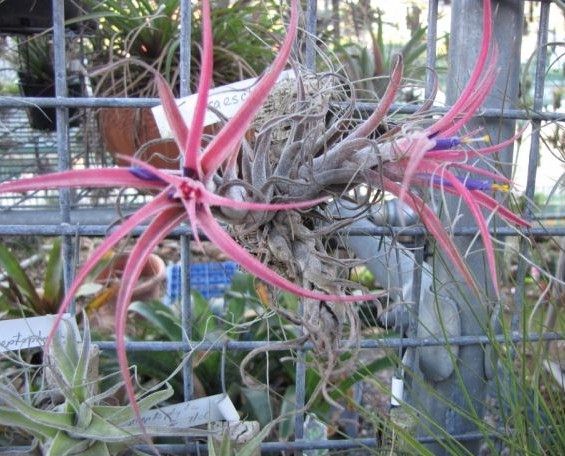
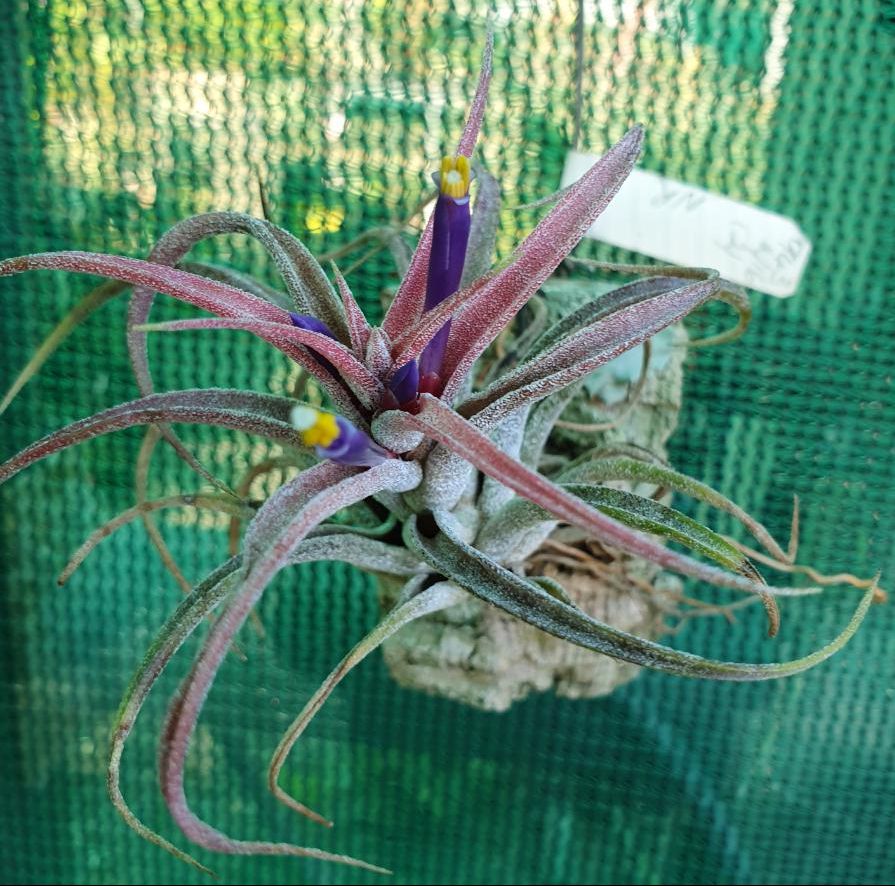
| Ken Woods, Neville Ryan's plant at BSA show 05/06 |
Adam Bodzioch 07/13 |
John Olsen 07/13 |
Pam Butler 06/20 |
Adam Bodzioch ... "obtained from Chris Larson in February this year. Chris told me to keep it warm in winter. I have put it in my Solar igloo with a fan heater going to keep temps above 12 degrees. While it has a nice pinkish hue on the inner leaves and looks very healthy it has only one flower. Is this common?"
John Olsen ... "My T. praschekii does Ok in Brisbane’s winters and managed a few flowers."
Stephen Haines ... "Hi all. Something I have not seen before with this species. Attached pics of praschekii with 4 small pups growing from the base.
This plant has not flowered & is still growing out of the centre.
As you can see this plant has had a bit of a hard time being a survivor of 2016/17 summer from hell & is now grown undercover outside on a brick wall where the coldest nights this winter have been around 4 degrees but it seems to be handling the cooler nights ok.
I wonder if past stresses could have caused pupping as a means of surviving?"
Pam Butler ... "I have 5 plants and the only one with pups has flowered."
Peter Tristram ... "In my experience, like with Pam, they are singles until after blooming from pups, however they can clump a bit when seed grown. I tend to think yours had a shock and threw out some pups as well as continuing to grow from the centre. It’s a lovely little Cuban species, so much easier than turquinensis."
Chris Larson ... "T. praschekii is very borderline outside here (in Melbourne) - a cold tender Cuban. These sorts of plants often do this for me in the years they make it through the winter. I think it is a defence mechanism giving it more chance of getting through the next."
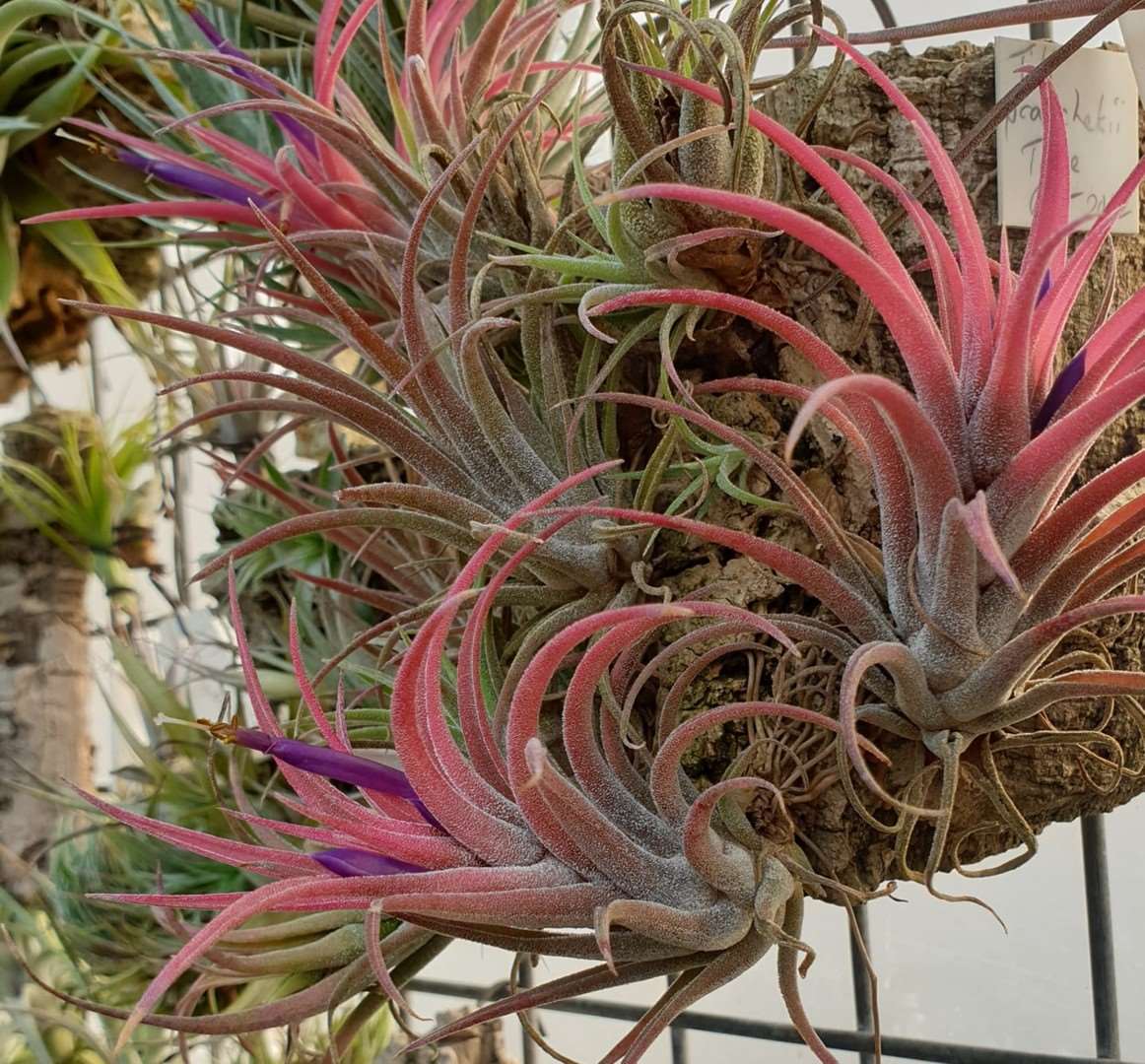
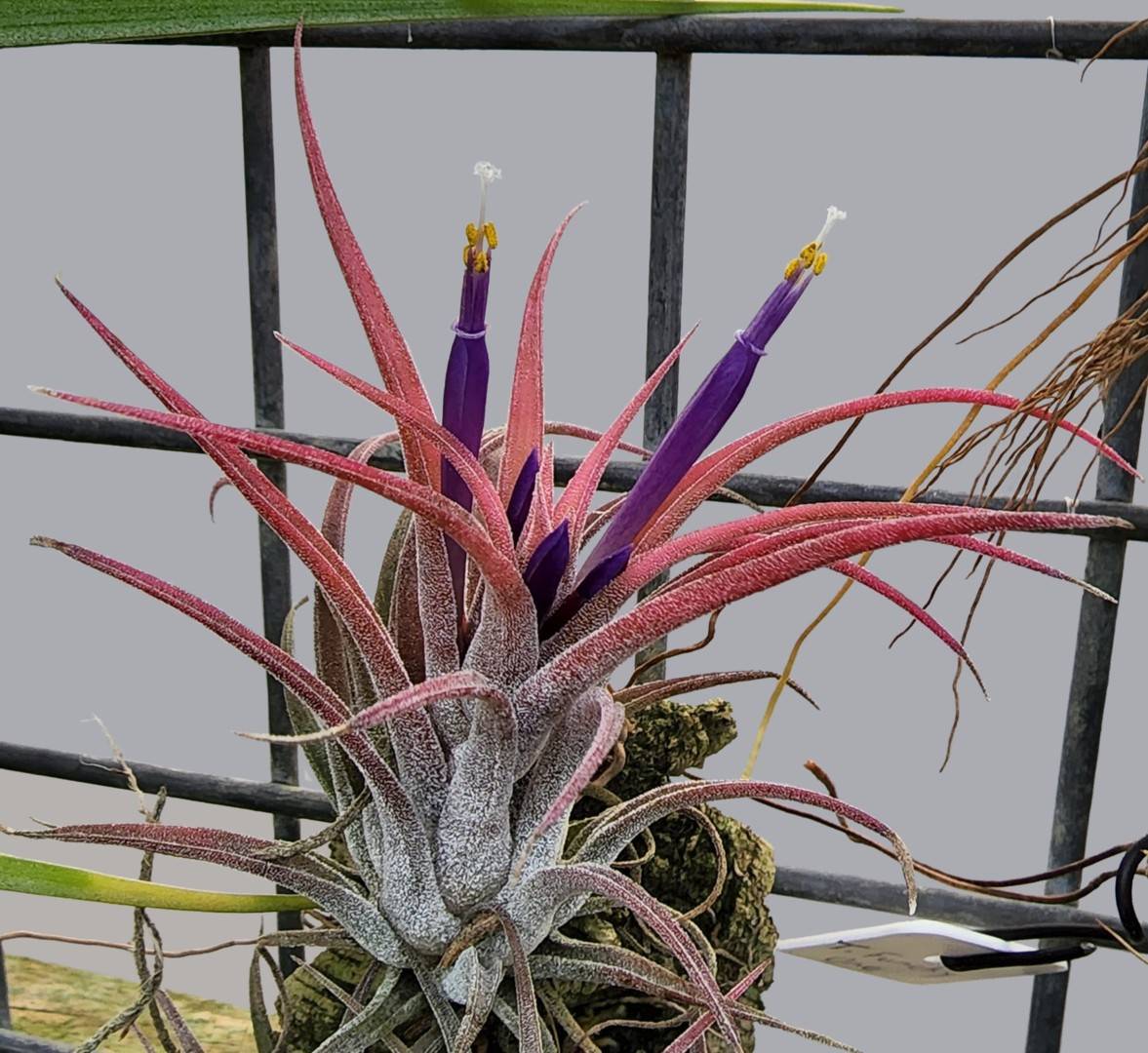
| Chris Larson 04/21 from type locality |
Chris Larson 07/22 |
Tillandsia praschekii, R Ehlers & K Willinger, Die Bromelie2: 36-37. 1989
Plant stemless, flowering to 8cm high, forming an erect, narrow, almost bulbose rosette with few ( up to 15) leaves, growing in large groups, the leaves succulent.
Leaf Sheath round to elliptic, 1.5cm long, 1.5 cm wide, spoon shaped, strongly constricted above the sheath and an abrupt change to the blade, inside brown with small raised trichomes, the outside dark green, brownish at base, with dense raised grey pruinose trichomes and the edges with small asymmetric trichomes.
Leaf Blade 3-4 times as long as the sheath, erect, to 7cm long, 6mm wide at the sheath join, triangular, erect, in one long filiform, bent towards the outside or evenly twisted tapering tip, the edges canaliculate ( grooved), inside greenish brown at base, then becoming green, dense small scales, outside dark green with dense raised pruinose scales.
Scape short, about 2cm long, 5mm diam, densely covered by the scape bracts which are similar to the leaves.
Inflorescence bipinnate, erect, to 4cm long, 3cm wide, with up to 10 polystichously arranged, dense, almost upright, capitate, 1- 3 flowered compound spikes, at the top of the inflorescence the upper 2-5 spikes are not developed, further with its primary bract present the inflorescence becomes a fan shaped rosette, the tip of which ends with 1 vestigial flower.
Primary bract similar to the upper leaves, much longer than the spike, sub-succulent, with the clearly established sheath enclosing stem and spike, the blade narrow triangular with bent edges, greenish pink, strongly pruinose scaled, the lower ones 4cm long, and the upper ones shorter.
Spike erect, short stemmed, complanate, joined to the smooth side of the rhachis, the lower ones with up to 3 flowers, the upper 1 flower, with extra sterile floral bracts at the bottom and a vestigial flower at the tip, exclusive of the petal, 2cm long, 8 – 10mm wide, flower short stemmed ( 2mm).
Flower bract 3 – 4mm shorter than the sepal, 7 – 9mm long, at the base 7mm wide, broad triangular with hooked tip, hard-leathery, with transparent edges, strongly nerved, wing keeled, inside green, weakly scaled, outside green with dark red tip, with large raised trichomes.
Sepals 1.2cm long, 5mm wide, elliptic, acuminate, beoming hard with transparent edges, weak, however with large trichomes, uniformly joined for 1mm, the posterior pair keeled, at the base green, otherwise wine red.
Petal forming an erect tube, tongue shaped with a bent recess, the tip bent a little to the outside, 3.6cm long, 3mm wide at base and white, then 6mm wide and violet-blue.
Stamens exceed the flower by more than 1cm Filament in two sets arranged in 3 unequally long rows, to 4.5cm long, the upper portion 0.75mm diam, and oval, violet, narrow ribbon-like and white.
Anther elliptic, 2mm long, 0.75mm wide, joined to the filament at the middle or 1/3rd from the tip, brown.
Pollen egg-yellow.
Style longer than the filament, white, thin, the upper 2cm light lilac.
Stigma white, erect, lobes spreading and papillose, 2cm high, 2mm wide.
Ovary longish oval with prominent edges, 5mm high, 3mm wide, light green.
Type locality Cuba, Province of Pinar del Rio, about 40km from Los Hoyos, 200- 300m, growing on rocks, leg Ing. J. Prasek, PR 32/83 in Feb. 1983 Holotype WU
Differs from T. pruinosa in
1. less bulbose habit
2. Spike smaller with smaller flower and a sterile tip.
3. Flower bracts shorter than the sepals
4. Sepals smaller
Differs from T. ionantha v. scaposa in
1. Leaves pruinose scaled.
2. Leaf sheath wider and bulbose.
3. Leaf blade much longer.
4. Inflorescence is not a single polystichous arrangement but rather compound with 10 spikes which exceed the fanshaped primary bract rosette.
5. Flower bracts leathery broad triangular, strongly keeled, pruinose scaled and shorter than the sepals.
Updated 04/07/22





